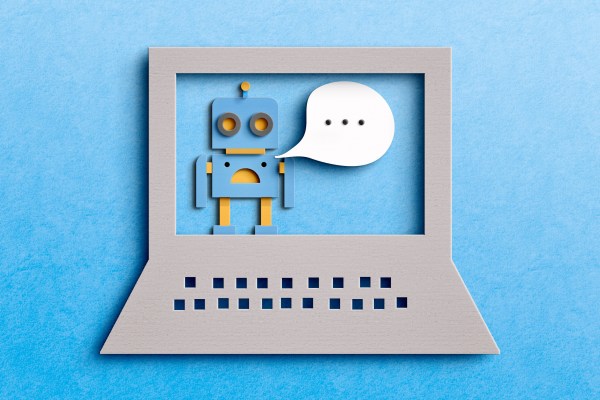A lot’s changed since Tay. The advent of AI tech like ChatGPT dramatically improved the chatbot experience, showing that chatbots aren’t necessarily destined to deliver underwhelming back-and-forth conversations. But a new survey shows that, at least when it comes to customer service, chatbots still have a long way to go before they meet most people’s expectations.
Customer engagement platform Cyara commissioned Forrester to poll over 1,500 consumers who’ve used sales or support chatbots in the last six months about their recent experiences. Close to a majority said they were bearish on chatbot technologies, with roughly half agreeing that the chatbots they’ve used often frustrate them and nearly 40% characterizing their interactions with these chatbots as negative.
“Delivering positive chatbot experiences has a critical impact on customer satisfaction and sales, and subpar chatbots will not cut it for consumers today,” Cayara’s chief customer officer, Dennis Reno, said in a statement. “Organizations that invest in quality-assurance testing and training chatbots can provide customers with better and more consistent chatbot experiences.”
According to three-quarters of those responding to the Forrester survey, today’s customer service chatbots are unable to handle complex questions, and around half said that chatbots make it difficult to arrive at answers to basic questions. The same percentage of respondents — roughly half — said chatbots provide responses that don’t make sense within the context of the questions they’re asked.
Given the newness of ChatGPT-based tech, it’s highly unlikely most chatbots are taking advantage — meaning that they’re less sophisticated in their responses and capabilities. But even once ChatGPT-like bots become the norm, the survey results suggest that they’re unlikely to be a panacea. ChatGPT doesn’t address complex question issues; both it and its derivatives (i.e., Microsoft’s recently launched Bing Chat) tend to get facts wrong. It’s also biased in potentially offensive ways, an undesirable quality in a customer service chatbot, to be sure.
So is there hope for chatbots in customer service? It seems so, despite evidence to the contrary. There’s certainly a dollars-and-cents motivation on the business side, with a 2017 report from Juniper Research estimating chatbots would save businesses more than $8 billion per year by 2022 and that consumer retail spending via chatbots worldwide would reach $142 billion in 2024. The aptly named Chatbots Magazine, meanwhile, found that chatbots can reduce customer service costs by up to 30%.
Despite its general negativity, the Forrester survey, too, outlines the potential benefits of chatbots. Sixty-one percent of the respondents said that they’d be more likely to return to a brand following a good chatbot experience, while 56% said they’d consider recommending that brand to others afterward.
The risks of failure are high, of course. Thirty percent of the consumers Forrester polled said that they’d switch brands or abandon their purchase altogether after just one negative chatbot experience. But a recent CB Insights piece highlights several success stories:
- When Emirates Vacation integrated a conversation bot within its display ads, it boosted engagement rates by 87%, according to the company’s internal data.
- Madison Reed’s Madi, a computer vision-enabled chatbot that helps visitors find a hair color shade based on their submitted selfie, increased engagement rates for the brand by 400% while bumping up click-through rates by around 20%.
- Amtrak claims that its chatbot has done similarly well, generating an 8x return on investment and increasing revenue per booking by 30%.
“Businesses that strive to meet customers’ chatbot expectations can increase customer loyalty, boost brand reputation and lower contact center support costs since customers are less likely to seek out more expensive avenues of communication,” Reno said. “And of course, satisfied customers lead to increased sales, which has a positive impact on a company’s bottom line.”
Other reports imply that companies are willing to take the plunge if it means a competitive advantage. According to Gartner, by 2027, chatbots will become the primary customer service channel for roughly a quarter of organizations. (There was an estimated 67% increase in chatbot usage between 2018 and 2020 alone.) Mordor Intelligence anticipates that the chatbot market, which was valued at $17.17 billion, will reach $102.29 billion by 2026.
Investors see dollar signs, with VC firms pouring hundreds of millions into an assortment of companies developing chatbots and other conversational AI platforms. The data suggests it’s a wise bet — even if chatbots never quite deliver on their promises from an end-user standpoint.
